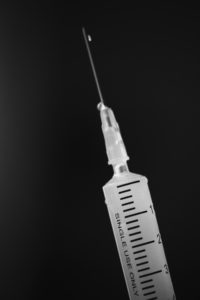Chronic anal fissures can cause significant discomfort, affecting a person’s daily life with pain, bleeding, and fear of bowel movements. Fortunately, for those who do not respond to dietary changes and topical treatments, Botox injection offers a safe, minimally invasive, and effective alternative to surgery.
 What Is an Anal Fissure?
What Is an Anal Fissure?
An anal fissure is a small tear in the lining of the anal canal, often caused by passing hard stools and constipation. Acute fissures may heal with conservative measures such as increased fiber intake, stool softeners, and topical ointments. However, when symptoms persist beyond 6–8 weeks, the fissure is considered chronic. Chronic fissures may be associated with a cycle of pain and sphincter muscle spasm that impairs healing.
How Botox Works for Anal Fissures
Botulinum toxin (Botox) is best known for smoothing wrinkles, but in the context of anal fissures, it plays a therapeutic role by relaxing the internal anal sphincter muscle. The internal sphincter is often in a state of chronic spasm in fissure patients, reducing blood flow to the area and hindering healing.
By injecting Botox directly into the internal sphincter muscle, the spasm is relieved, allowing better blood supply and promoting natural healing of the fissure. Botox alters the dynamics of the internal sphincter muscles, helping to prevent further tearing during bowel movements. The effect is temporary—typically lasting 2–4 months—but that window is often enough for the fissure to resolve.
The Injection Procedure
Botox injection for anal fissures is usually done in a clinic or outpatient setting. It typically involves:
Benefits of Botox Over Surgery
The traditional surgical option, lateral internal sphincterotomy, has a high success rate but carries a small risk of fecal incontinence, especially in women or older patients. Botox offers several advantages:
Success Rates and Limitations
Clinical studies report healing rates of about 80% with Botox injections. While not as high as surgical sphincterotomy (which can exceed 90%), Botox is often preferred as a first-line procedure for chronic fissures due to its safety profile.
Some patients may require a second injection if the fissure does not heal completely after the first. In rare cases, surgery may still be necessary.
Who Is a Good Candidate?
Although Botox injection works well on all kinds of chronic anal fissures, but it is particularly suitable for:
Post-Treatment Care after Botox injection:
Conclusion
Botox injection represents a valuable tool in the treatment of chronic anal fissures. It combines effectiveness with a low-risk, outpatient approach. For patients frustrated by ongoing fissure symptoms but wary of surgery, Botox may offer much-needed relief and a chance for natural healing.
Note: Always consult an experienced expert to discuss the best treatment option for your specific condition.
 An anal fissure is a small tear or crack in the lining of the anus, and when it persists for more than six weeks, it is classified as chronic. These fissures are typically located in the posterior midline of the anal canal and are a common cause of anal pain and discomfort.
An anal fissure is a small tear or crack in the lining of the anus, and when it persists for more than six weeks, it is classified as chronic. These fissures are typically located in the posterior midline of the anal canal and are a common cause of anal pain and discomfort. While Botox is often associated with battling wrinkles and fine lines on the face, the medication can actually be used in your…anal region. But not for cosmetic purposes, of course.
While Botox is often associated with battling wrinkles and fine lines on the face, the medication can actually be used in your…anal region. But not for cosmetic purposes, of course. Constipation is one of the most common bowel disorders affecting American adults, with roughly 20 percent of the population suffering from hard, painful stools. Defined as having fewer than three bowel movements per week for several weeks, constipation occurs when the colon absorbs too much water from the food passing through it, creating dry stool that’s extremely difficult to pass.
Constipation is one of the most common bowel disorders affecting American adults, with roughly 20 percent of the population suffering from hard, painful stools. Defined as having fewer than three bowel movements per week for several weeks, constipation occurs when the colon absorbs too much water from the food passing through it, creating dry stool that’s extremely difficult to pass. 3. Exercise more – Being more active is always beneficial to your health! Hitting the gym or simply going for a jog outside helps aid food breakdown and reduce the time it takes food to move through the large intestine. The less time food sits in your colon, the more water it retains to help ease stool passage later.
3. Exercise more – Being more active is always beneficial to your health! Hitting the gym or simply going for a jog outside helps aid food breakdown and reduce the time it takes food to move through the large intestine. The less time food sits in your colon, the more water it retains to help ease stool passage later. Although the exact causes of skin tags are unclear, they usually result from one or more of the following:
Although the exact causes of skin tags are unclear, they usually result from one or more of the following: Bleeding from your rectum or anus is never a pleasant experience, and it can understandably cause immediate panic. Generally, bright red blood indicates bleeding in the lower rectum, while dark red blood indicates bleeding from deeper and further up in the body. While passing dark red blood is usually a sign of digestive bleeding and requires immediate attention,
Bleeding from your rectum or anus is never a pleasant experience, and it can understandably cause immediate panic. Generally, bright red blood indicates bleeding in the lower rectum, while dark red blood indicates bleeding from deeper and further up in the body. While passing dark red blood is usually a sign of digestive bleeding and requires immediate attention, 


